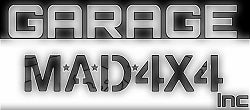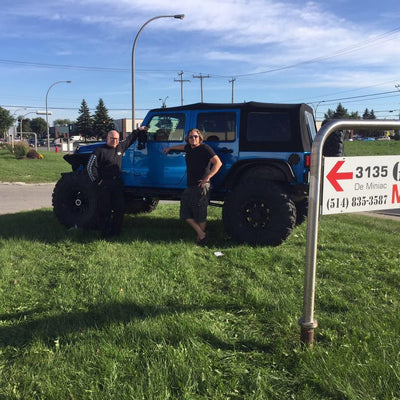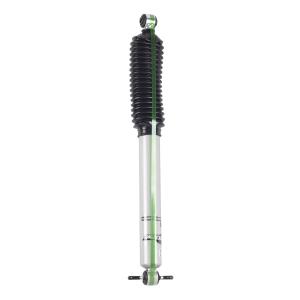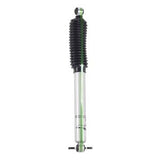Rubicon Express - 3-1/2 Inch Monotube Rear Shocks - RXJ714
Rubicon Express - 3-1/2 Inch Monotube Rear Shocks - RXJ714
The basic purpose of a shock is to work with the spring when the vehicle’s suspension is under compression to resist the compressive force of a bump, and then to work against the spring during rebound to prevent the spring from delivering its compressed potential energy to the wheel and causing the vehicle to bounce. With the correct spring rates and compression valving, the vehicle will absorb the bump with a minimum of deflection to the chassis. Then with the correct rebound valving, the suspension will return to ride height with a minimum excursion beyond ride height. Assuming correct spring rates, too much compression valving will create a harsh ride and too little will result in abused bumpstops. Too much rebound valving will cause the suspension to react too slowly and not return to ride height in time for the next bump, too little and the vehicle will bounce. When you add the variables of speed, varying size of bumps (amplitude), distance between the bumps (frequency), and a myriad of chassis tuning objectives and hurdles, shock tuning becomes the most difficult and single most important component of suspension tuning. Changes in vehicle weight (people, baggage, fuel) varying on-road and off-road terrain (smooth highway, twisty mountain roads, bad pavement, fire roads, washboard, etc.) make tuning a shock and spring package very difficult.
The basic purpose of a shock is to work with the spring when the vehicle’s suspension is under compression to resist the compressive force of a bump, and then to work against the spring during rebound to prevent the spring from delivering its compressed potential energy to the wheel and causing the vehicle to bounce. With the correct spring rates and compression valving, the vehicle will absorb the bump with a minimum of deflection to the chassis. Then with the correct rebound valving, the suspension will return to ride height with a minimum excursion beyond ride height. Assuming correct spring rates, too much compression valving will create a harsh ride and too little will result in abused bumpstops. Too much rebound valving will cause the suspension to react too slowly and not return to ride height in time for the next bump, too little and the vehicle will bounce. When you add the variables of speed, varying size of bumps (amplitude), distance between the bumps (frequency), and a myriad of chassis tuning objectives and hurdles, shock tuning becomes the most difficult and single most important component of suspension tuning. Changes in vehicle weight (people, baggage, fuel) varying on-road and off-road terrain (smooth highway, twisty mountain roads, bad pavement, fire roads, washboard, etc.) make tuning a shock and spring package very difficult.
- Type: Nitrogen Gas Charged
- Internal Design: Monotube
- Adjustable: No
- Extended Length (IN): 25 Inch
- Compressed Length (IN): 15.3 Inch
- Rod Diameter (IN): 0.55 Inch
- Upper Mounting Style: OEM
- Lower Mounting Style: OEM
- Valving Type: Application Specific Valving
- Rod Material: Steel
- With Reservoir: No
- Includes Boot: Yes
- Quantity: Single
- Type: Nitrogen Gas Charged
- Internal Design: Monotube
- Adjustable: No
- Extended Length (IN): 25 Inch
- Compressed Length (IN): 15.3 Inch
- Rod Diameter (IN): 0.55 Inch
- Upper Mounting Style: OEM
- Lower Mounting Style: OEM
- Valving Type: Application Specific Valving
- Rod Material: Steel
- With Reservoir: No
- Includes Boot: Yes
- Quantity: Single





